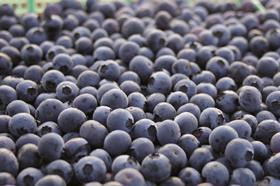
Chile’s blueberry industry is facing new export challenges this season as it prepares to deal with the restrictions enforced by US importers after the discovery of Lobesia botrana in US-bound shipments last year. The focus will be on keeping the impact of these measures to a minimum and ensure that the season unfolds in a normal way in terms of volume and quality.
“The country has wasted no time in drawing up a strategy to combat and eradicate the disease which incorporates private and public companies, academics, researchers, advisers and regulators,” explains Grisel Monje, executive director of the official control programme run by Chile’s agriculture and livestock service SAG.
Monje praises the level of commitment shown by the government in the fight against Lobesia to ensure that the new season progresses as smoothly as possible. It has completely overhauled the existing official control strategy, which used to cover just table grapes but has now been extended to blueberries and plums. In the case of the former, mandatory controls have been extended to all regions where the disease is latent, including O’Higgins, Maule and Bío Bío. Monitoring measures have been ramped up in blueberry farms nationwide by increasing the use of traps and surveys so that outbreaks can be detected and dealt with as early as possible.
“As you can see from the above-mentioned initiatives, the industry is tackling this problem head-on,” says Monje. “In order to pay for the extra monitoring funding levels have been doubled. It is vital we prevent the disease from spreading to new farms and the resulting damage to the country’s reputation.”
Talks are underway with the US Department of Agriculture to establish Lobesia-free zones, which would allow, amongst other things, the resumption of shipments of organic blueberries to the US. Most of Chile’s certified organic blueberry production comes from the Bío Bío region, but under current rules, organic shipments are banned as they would contravene the quarantine laws.
The private sector, too, says Monje, has pulled out all the stops. She claims companies’ proactive approach and willingness to cooperate with the objectives set out by SAG have been instrumental in preventing the disease from spreading further.
Meanwhile, Andrés Armstrong, executive director of the Chilean Blueberry Committee, says the latest forecasts point to an increase in production following last season’s frost damage. “We’re expecting exports to rise overall and given the steps we have taken against Lobesia we are hopeful of seeing a recovery in our US programme,” he says.
Armstrong points out that as well as addressing the more pressing issue of Lobesia, companies have put guidelines in place to ensure optimum fruit quality. A key aspect will be to minimise the time it takes to process the fruit after harvesting in order to ensure that it is of a high enough quality to withstand the fumigation process, whether it takes place in Chile or on arrival in the US.
In light of the increased production volume and SAG’s far-reaching Lobesia containment strategy, growers are reasonably optimistic about the prospects for the new season. While much still rests on the USDA’s decision, they can at least be certain that they have made every effort to secure the best export conditions.
Meanwhile, the Chilean Blueberry Committee has a full promotional programme lined up for different markets, continuing the work that has been done to date to raise consumption levels and position Chile as a high quality supplier of counterseasonal blueberries.



